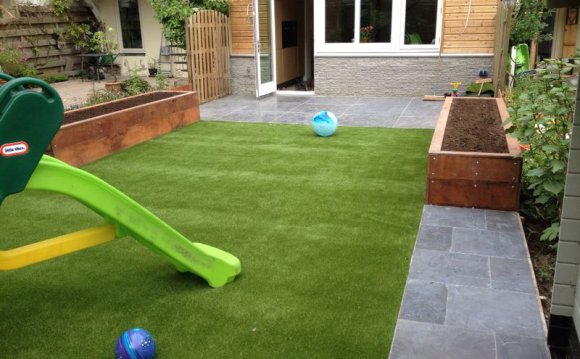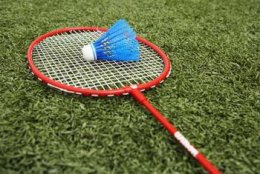
 Artificial grass allows you to play on the turf without damaging it.
Artificial grass allows you to play on the turf without damaging it.
Caring for a lawn means many different chores, from mowing to fertilizing. Although you want the beauty of a vast lawn, even the best maintenance efforts may still leave your turf with yellow patches and weeds. Using artificial grass for your garden offers you a practical solution to constant lawn care and allows other plants to flourish nearby.
Basic Construction
Artificial grass is not a simple single layer of green material hiding your topsoil. It has several layers of materials beneath the typical green polyethylene grass blades for superior support. You choose from a variety of different grass blade lengths and colors to match with your particular garden style. The gravel base under the supporting layers directs rainfall into the lower soil. Moving water through the ground preserves the underlayment's integrity and contributes to a normal soil ecosystem underground.
Location
Every yard has a spot where artificial grass might work. Under trees is a good example. In general, trees should not have real grass growing up to their trunks because it takes nutrients and water from the tree. The shade under a tree also isn't the best place for grass. Artificial grass retains its color and does not compete with the tree for water or nutrients. On the other hand, grassy play areas take a lot of abuse from foot traffic and installing concrete in these areas may be too dangerous for adventurous children. As a solution, artificial grass works well in small garden corners or across an entire yard, depending on your needs.
Benefits
Lower water bills are a main motivator for installing artificial grass. Unlike real grass, you do not have to water or fertilize artificial grass. You automatically conserve water while saving money on your monthly water bill. A lesser-known benefit to artificial grass is that it acts as a barrier to pests. Flower and vegetable gardens surrounded by artificial grass do not have real grass nearby for pests to hide and grow in. You also reduce your contribution to pollution because you won't be using a lawnmower that spews gasoline vapors and exhaust fumes. Some cities offer rebates to homeowners who replace their lawn with water-wise landscaping.
Installation Considerations
Although artificial grass is expensive to buy and install, it saves money over the years. For example, you do not need to buy fertilizers, soil amendments or water for its care. Your yard needs to be relatively level so that the grass installation remains stable. Any low-lying or hilly areas must be altered before you can install artificial turf. Slopes do not typically work well with artificial grass because the hidden lower layers tend to shift down the hill over time.















